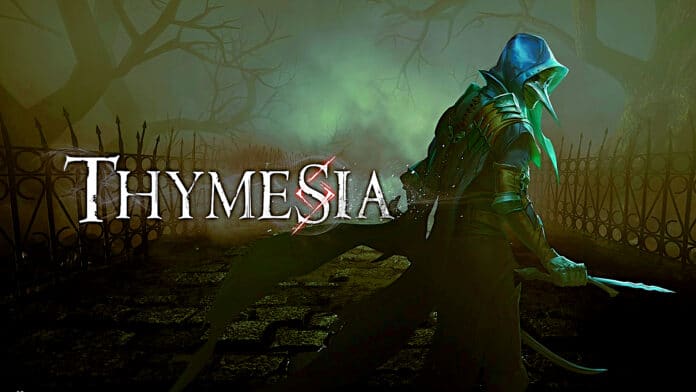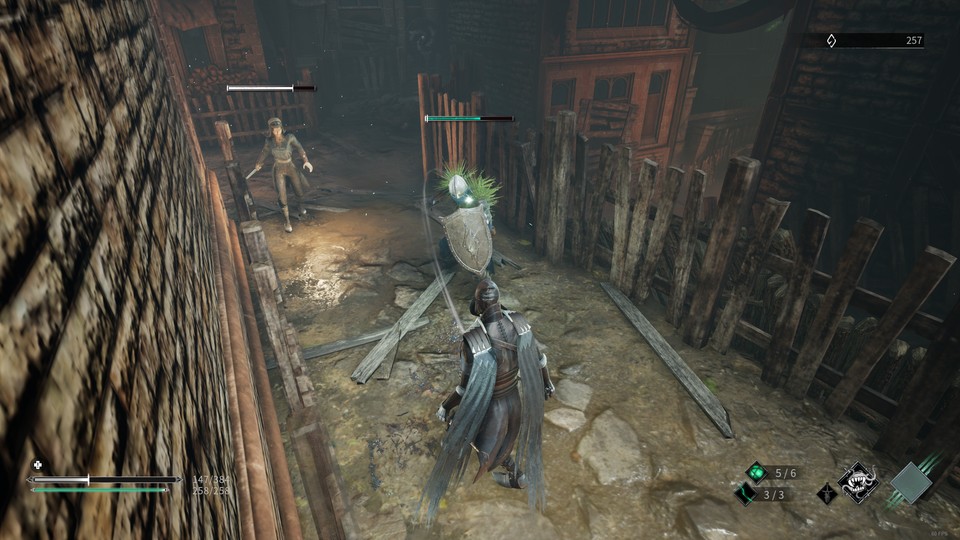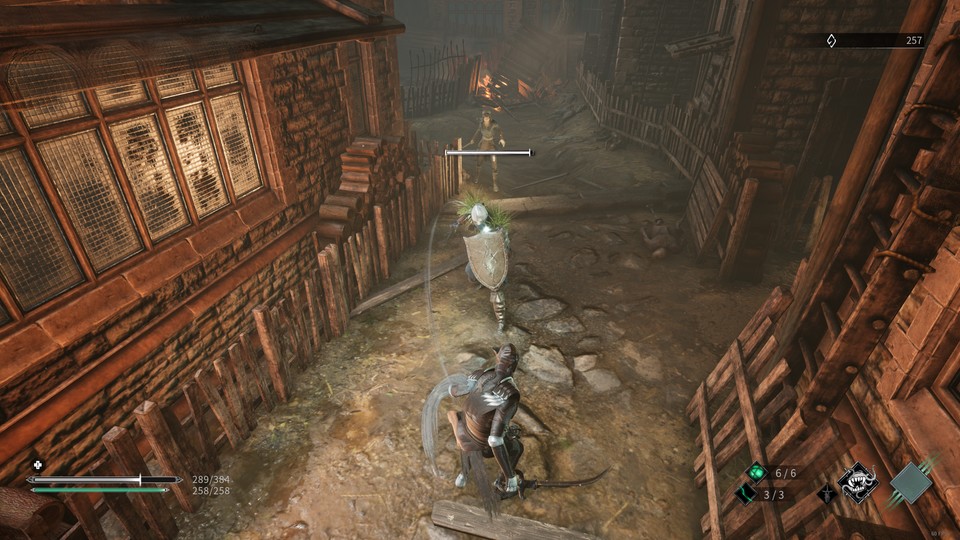Thymesia offers a lot of what we love about Souls games. If only it wasn”t so damn short …
A fantasy setting like from Dark Souls. The aggressive fighting style from Bloodboorne. Abilities and weapon selection like in Sekiro. What sounds at first like a best-of of all games from From Software has its own flavour. Thymesia, however, unfortunately doesn”t get enough time to develop.
A few months ago I was able to spend a few hours with Thymesia and have been looking forward to the title ever since. However, if my future self had told me that I had already seen a third of the game back then, I would have shaken my head in disbelief. I”ll explain exactly why brevity isn”t the spice here in the review.
Table of Contents
A plague doctor against the plague
In Thymesia, we take on the role of Corvus, a doctor who has lost his memory for reasons™ and is now trying to regain his memories piece by piece. In search of them, we scour medieval castles and villages that have been completely taken over by a mysterious disease: The houses are barricaded, the streets empty.
Except for those infected by the plague, who want to get at us. These are mostly humanoid enemies, later joined by beautifully grotesque bosses.
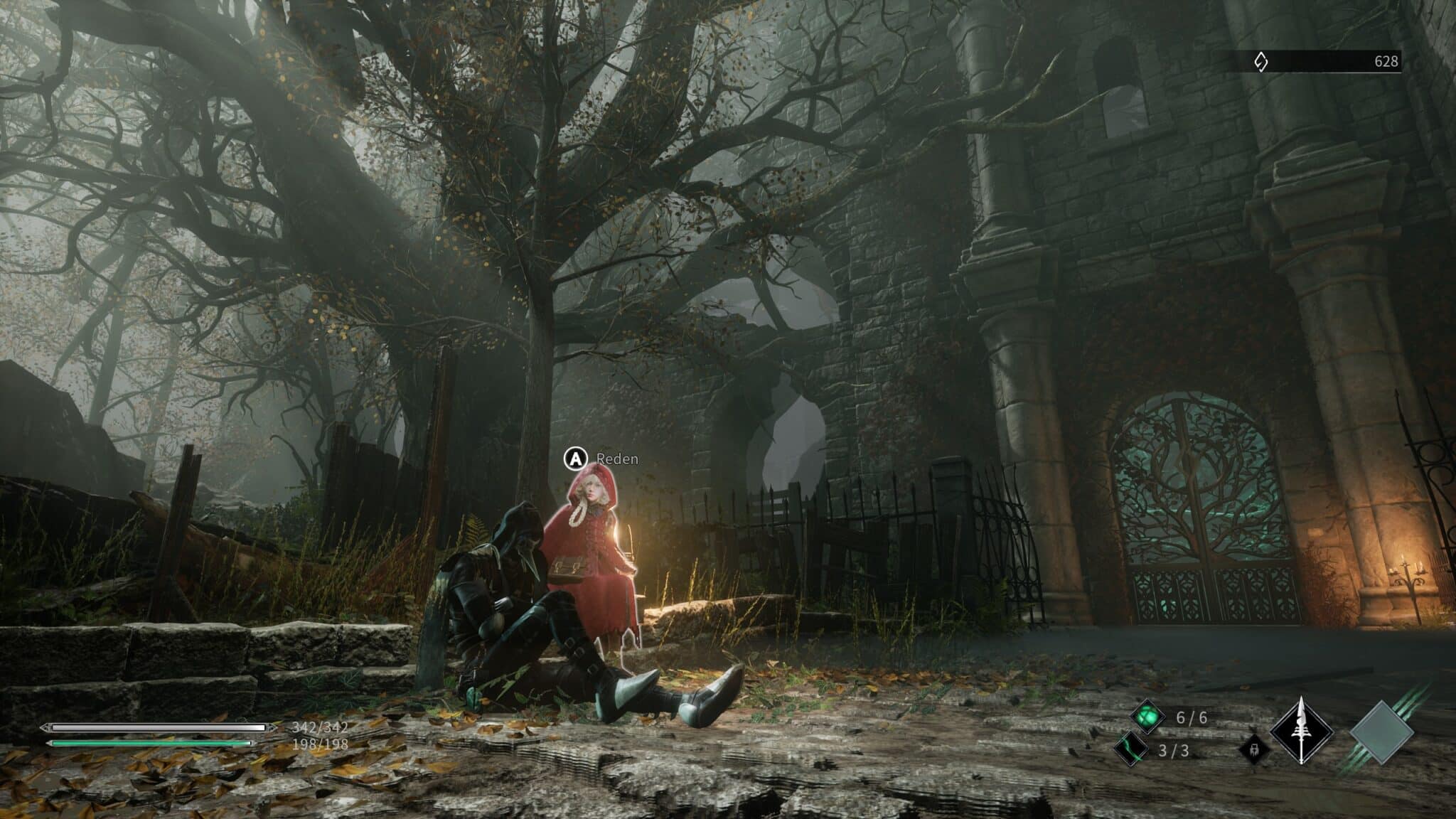
Thymesia exudes a certain melancholic loneliness, not unlike the great role models. Ultimately, however, the game world remains only a façade. There are hardly any distinctive places, and environmental storytelling is also lacking, apart from the dark initial situation. Furthermore, cutscenes are few and far between, and the few NPCs logically only engage in cryptic small talk. What is reality and what are only memories?
The individual areas of the game are not connected to each other. We dive into our various memories or levels via a small hub world. These are quite a bit more linear than in Souls titles, but at least they also come with branches and smaller secret paths. The checkpoints are set fairly so that you don”t have to cover too much ground again after a death. But watch out: Since there is no significant loot to be found in Thymesia (such as new armour, more on the weapons later), it often doesn”t feel particularly rewarding if you only find some of the game currency to level up again at the end of a secret path.
I”ll get that!
But level up, level up. I”ll just get into this elevator now, even if it would certainly no longer be in operation! On the top floor I enter an arena, the ubiquitous yellowish smog condenses. Nevertheless, I see the silhouette of a man who seems to have been eagerly awaiting me: he rushes towards me, accompanied by the soft sounds of some violins. A date? Yes, no.
To win this fight, all I have is a sabre, some feathers (they block attacks) and my plague claw. But my enemy underestimates my small arsenal. After a dodge, I take advantage of the short window of opportunity, channel the power in my magic claw and charge towards my opponent. Zack, I duplicated his weapons and their attack.
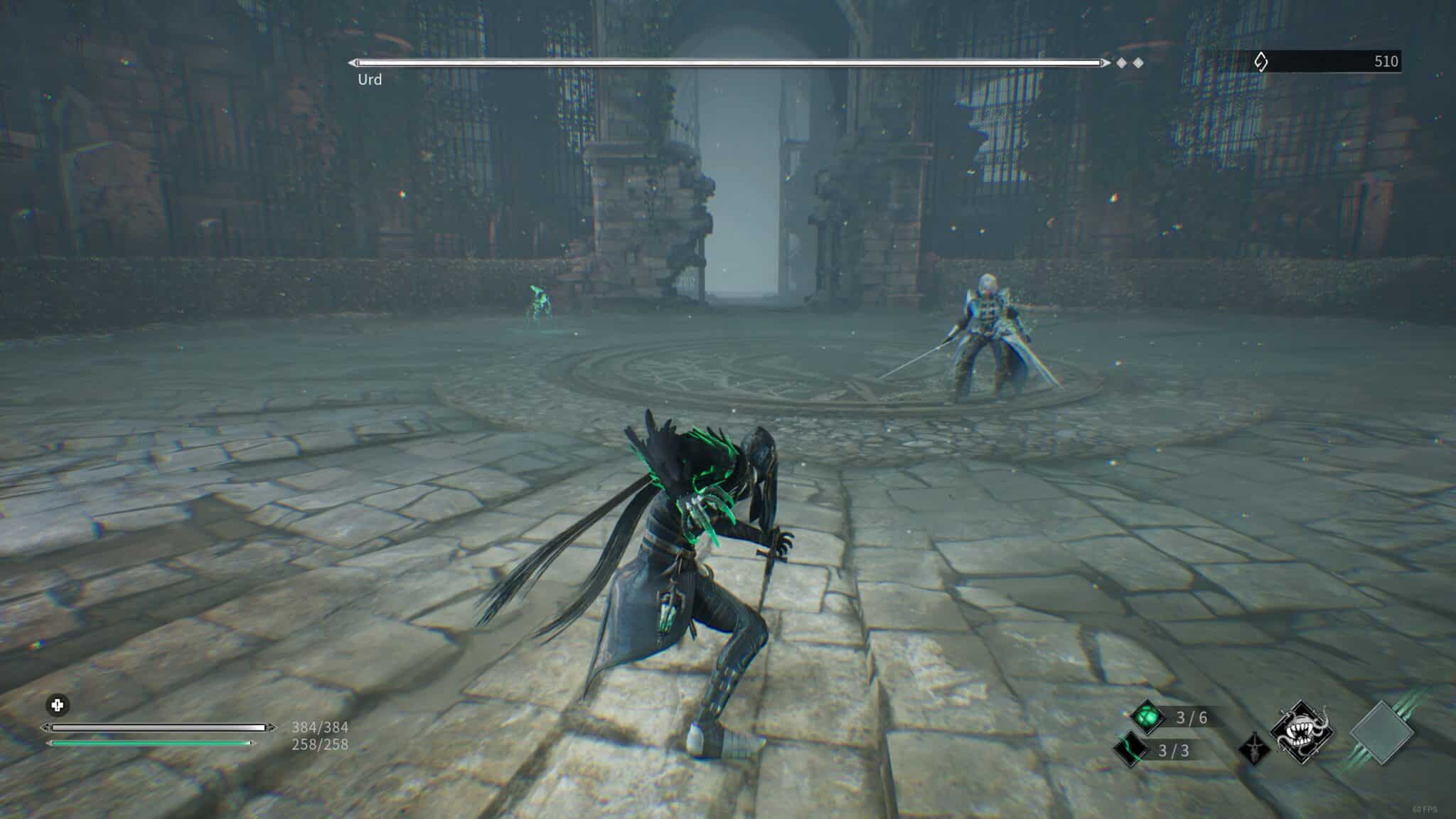
And this is the highlight in Thymesia: You can use your claw to steal the weapon and its unique attack from your respective opponent. These so-called plague weapons then do a lot of damage, but they can also heal or briefly buff passive abilities. However, the plague weapons can only be used once at first and must be stolen again afterwards.
That in itself is great fun, because with each new enemy you ask yourself before the fight what special attack you can steal from them. In the fight itself, stealing the enemy”s attacks adds to the thrill. We have to time the charging of our claw exactly to be able to steal the plague weapon.
But that”s not all! Because if you particularly like one of these plague weapons, you can permanently unlock it as soon as you rest at one of the checkpoints and even strengthen it. The first levels only make the weapon stronger, but later you usually get a second attack pattern. For example, I can no longer just stab forward with my plague halberd, but swing it around me several times if necessary.
In order to upgrade the plague weapons, you need special crystals that you can only get from enemies with exactly that weapon. This motivates you to run down certain corridors again, and with the right skills it never turns into an agonisingly long grind.
However, there is one small drawback: If an enemy catches you while you are performing a special attack with a plague weapon, you will not get any hit feedback. If you don”t concentrate on your life bar, you can miss your own death. The developers say that this is not a bug. We say: Stupid design decision
In order to upgrade the plague weapons, you need special crystals that you can only get from enemies with exactly that weapon. This motivates you to run down certain corridors again, and with the right skills it never turns into an agonisingly long grind.
However, there is one small drawback: If an enemy catches you while you are performing a special attack with a plague weapon, you will not get any hit feedback. If you don”t concentrate on your life bar, you can miss your own death. The developers say that this is not a bug. We say: Stupid design decision.
Demanding, not unfair
As some of you probably already know from Sekiro, enemies in Thymesia also have more than one life bar. If we injure our opponent with our sabre, a green bar appears, which we have to knock down as quickly as possible with our heavy attack.
If we do not do this, the bar fills up again. This forces you to attack aggressively and without much pause. You won”t find a stamina bar, but there is a small delay between attacks and evasive manoeuvres.
Optionally, however, you can interrupt your enemies by throwing a feather to land a strong counter. Further depth is provided by the abilities that you can improve at the checkpoints. Besides the usual suspects like increased damage, there are also many interesting skills. For example, a special dodge step.
All in all, the mechanics of the combat system mesh nicely and make many a fight seem like a rehearsed choreography. The plague weapons and the skills provide the necessary depth and bring enough variance into the game.
A (much too) short playing time
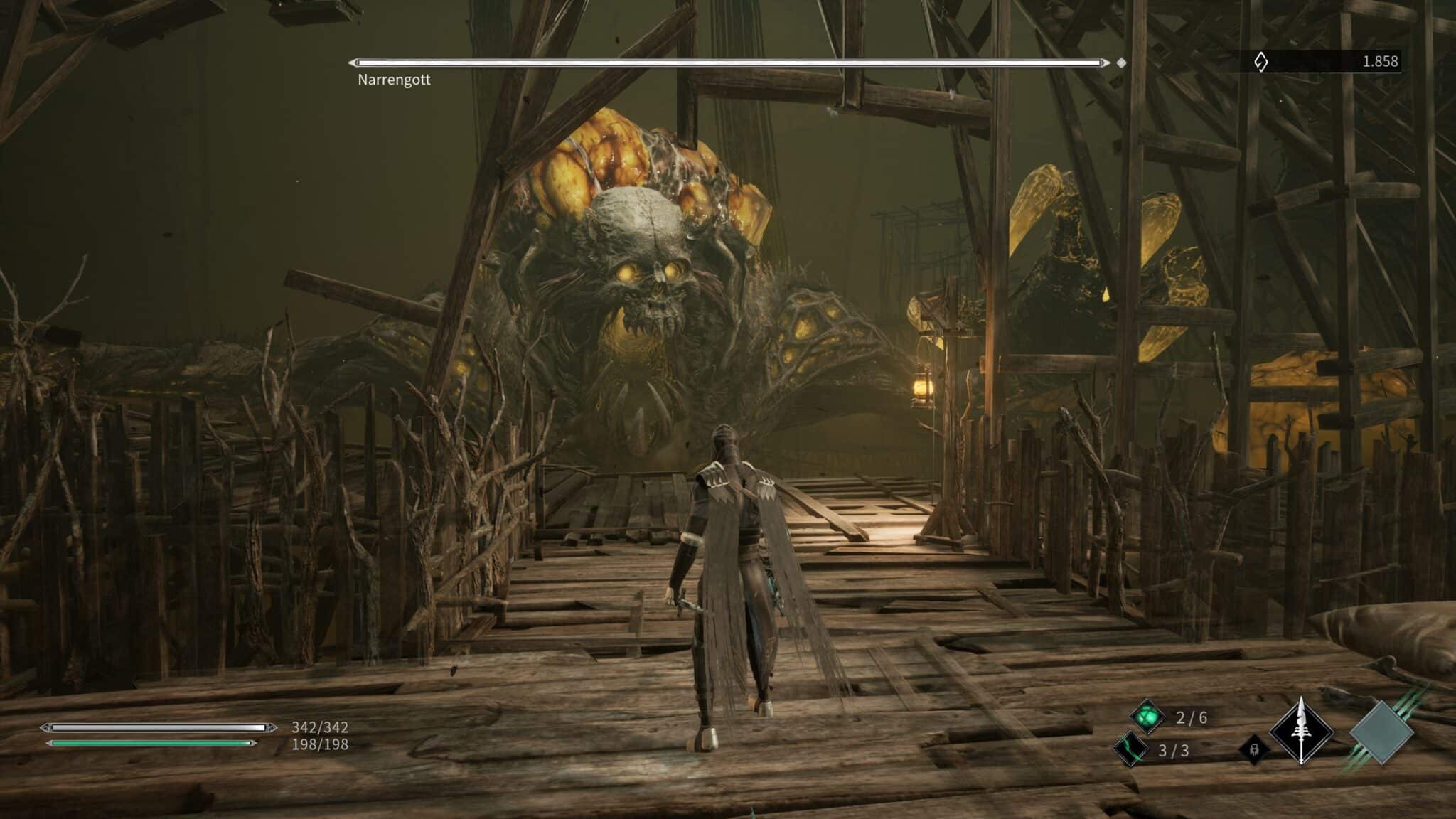
During my hours with Thymesia I couldn”t notice any significant FPS drops, it always ran smoothly. Okay, here and there an enemy gets stuck, but that”s not worth mentioning. Another thing that should be mentioned is that the boundaries of the game world never really match the corresponding textures, which is why we always walk a good step in front of a wall instead of touching it directly. This contributes even more to the impression of a façade; overall, everything seems a bit clumsy. As if the developers had run out of time and/or money at some point.
This is also noticeable in the playing time. The end flickers across your screen extremely abruptly. Once you have completed the main mission, further side missions with new branches and some cool boss fights open up in the respective chapter, but new, cool boss fights or not: the fact that there are basically only three chapters and the hub world is sad.
If you only play the main missions, the credits of Thymesia could probably flicker across your monitor after three to five hours, depending . The side strands expand the worlds to some extent, but also provide at most another three hours of playtime.
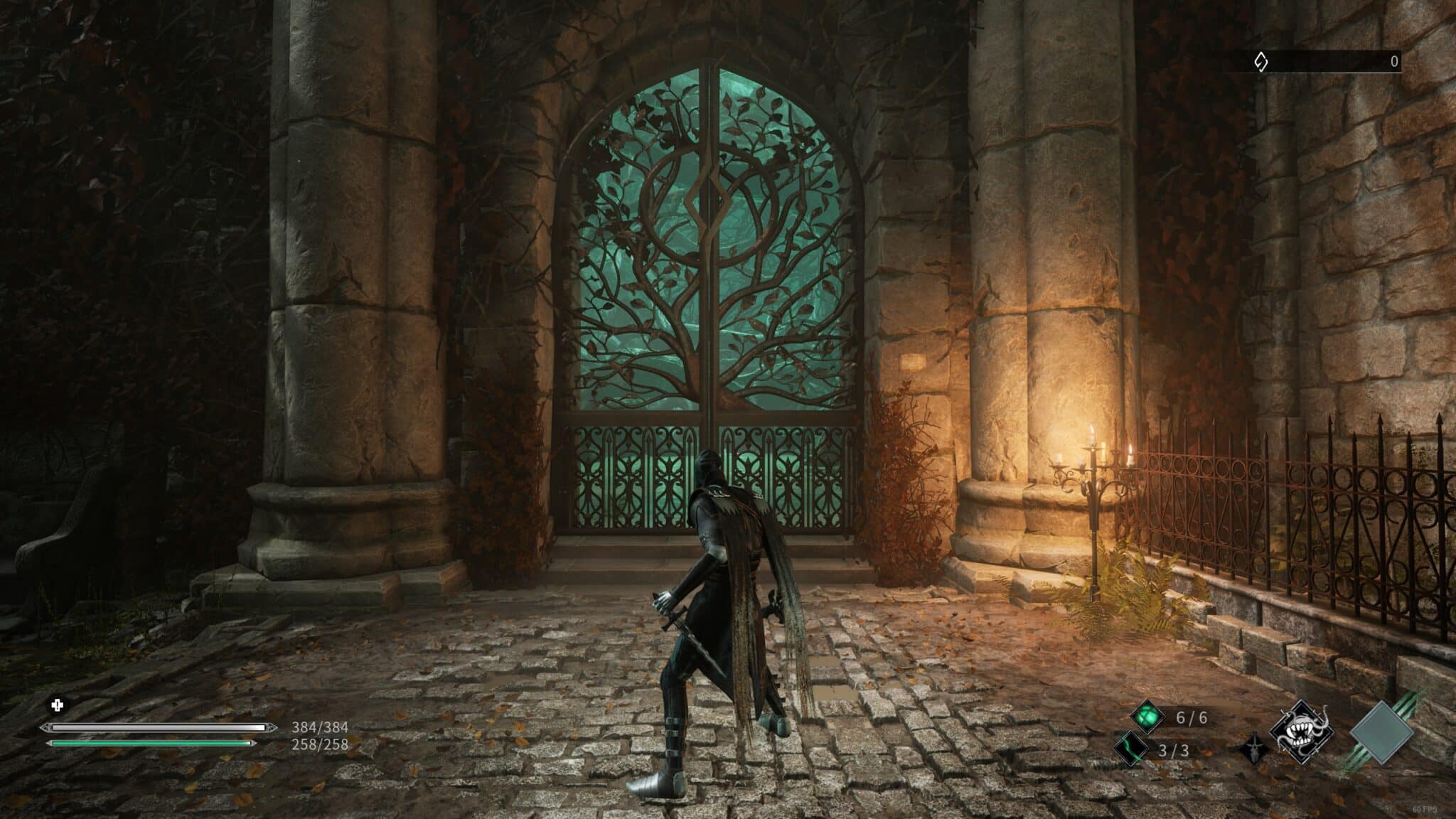
Of course, you don”t expect a small studio, like Overborder is one, to go on journeys for ages, but some good game mechanics can”t unfold in the short playing time. By the time I get to the point where I”ve really internalised the combat system, Thymesia is already over for me.
A New Game Plus mode could have at least partially solved the problem and given me the opportunity to try out all the plague weapons properly. So, all in all, Thymesia is really only half a game.
Editor”s verdict
I had a blast with Thymesia despite its brevity. After the overwhelmingly large game world of Elden Ring, a classic linear Souls-like game was just what I needed, even if I had to warm up to Corvus” novel moves first. But as soon as you understand most of the mechanics, the aggressive combat system becomes second nature and you literally prance through the game world. I was particularly taken with the powerful plague weapons.
The powerful attacks differ significantly from one another and therefore also provide the necessary motivation to really want to collect them all. These perfectly coordinated game mechanics make it all the easier for me to turn a blind eye to some aspects. Because what it all comes down to works flawlessly: denting the enemies” heads with fast and powerful moves.
The biggest flaw: the playing time, although I am actually a fan of short titles. But in Thymesia, some mechanics only unfold their full potential when the game is already over. For example, I hardly had the opportunity to really try out many plague weapons or to perfect the feather throw counter. Well, maybe then in Thymesia 2?

